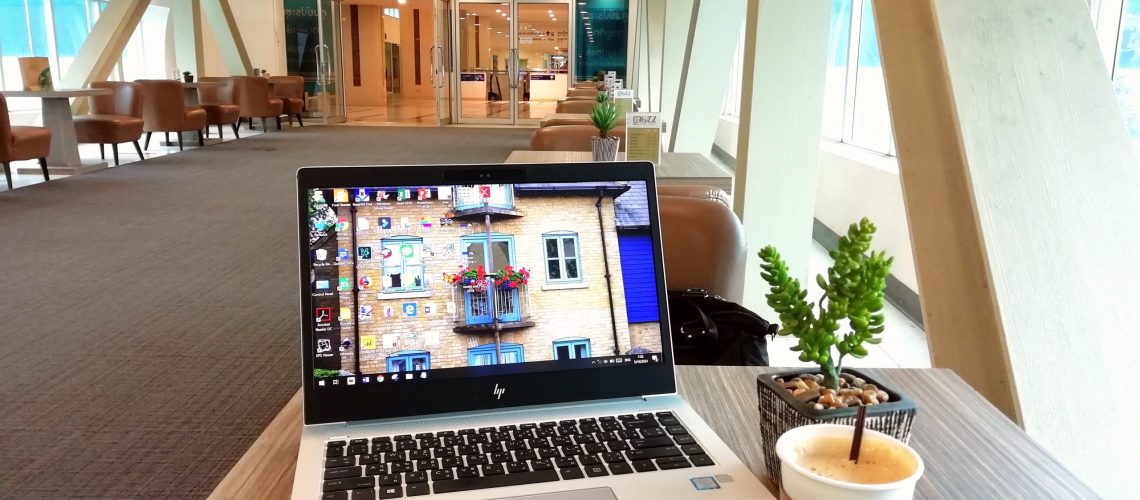The modern office is full of distractions. On the one hand, in an open-plan office you might find yourself in between a conversation happening between other employees unintentionally. And on the other hand, cubicle-style workstations can make workers feel like they are being caged in.
If you’re spending a third of your life at work, then ensuring your office space is free from distractions and brings you calm rather than the opposite is important. So, what can leaders do to ensure that their office is designed to encourage productivity? In this article, Geaves will run through three simple yet effective actions that leaders can take to help. These tips can also help remote workers at home.
Before we dive into how leaders can create a productive office space for employees, let’s look into just how common problems in office spaces affect productivity in the first place.
Lack of natural elements
How cut off are your employees from natural elements? Do they have access to windows? Are their workstations well lit?
Working somewhere with a lack of sufficient natural light coming can be detrimental in a number of ways; firstly, access to sufficient sunlight helps to regulate our circadian rhythm, which is responsible for keeping us alert when we are supposed to be working. Chances are, sitting somewhere dark or sufficiently lit can interfere with our ability to focus.
Spending time surrounded by natural elements has also been shown to decrease stress levels, as is claimed by research from a study by the International Journal of Environmental Research and Public Health.
Clutter
Mess and a lack of organisation can bring a whole host of issues relating to productivity at work. Time spent on finding misplaced documents in a pile of mess could be time spent on actually working. Not to mention the anxiety and stress that comes with cluttered workstations; in a study carried out by neuroscientists at Princeton University, they found that when there is too much to focus on visually, it has a negative impact on our ability to focus due to sensory overload.
Lack of space to cool off
If your office space only consists of workstations and lacks areas that can help workers to cool off and unwind, it’s not hard to imagine that being in the same space for too long might cause leaders to run into issues with a lack of morale and motivation.
Not all offices will be fortunate to have an expanse of space to have game rooms. Having said that, creating a dedicated space where employees can “break out”, whether that is just a room to have some quiet time in, a small library area, or anything else that can provide a change in scenery from their desk can help them to break up their tasks.
These spaces don’t have to necessarily be huge, but having them as wellbeing perks can help keep employee turnover low and productivity high.
Workplace injuries
Musculoskeletal injuries are one of the most common reasons for absenteeism. Repetitive strain injury, carpal tunnel syndrome can come from having poorly designed furniture and computer equipment in the office, leading to employees taking time off work which can hinder productivity, cost your organisation money and most of all, affect your employees’ wellbeing.
Now that we’ve had a look at the possible impacts of common issues in office spaces, let’s dive into the solutions.
1. Incorporate Adequate Light & Natural Elements
Biophilia, which refers to the idea that human beings are innately connected to nature is becoming a trend in office spaces. This is about more than just putting a plant pot in your office, it’s about allowing your employees to be exposed to nature, which brings a whole host of wellbeing benefits, including reducing blood pressure and absorbing harmful chemicals which are commonly found in office carpets and wall paint.
Ensure that natural light can come into your office; as discussed earlier, light helps to keep our circadian rhythms in place. If there are a lack of windows, then try daylighting – this technique uses artificial lighting that automatically adjusts to the time of day to mimic the effect of natural daylight.
If you are at home, sit by a window, and if the weather is good enough to accommodate it, switch up your scenery and work outside.
2. Have a “Clean Desk” Policy
Encourage employees to have a quick tidy of their desks at the end of play; removing documents, Tupperware, books, stationery and anything else will give them the peace of mind that they won’t be returning to a cluttered desk in the morning. Don’t forget to clean under desks and clear any trip hazards around your workstation, too.
3. Think Ergonomically
Office furniture shouldn’t just be a matter of aesthetics – ensure your employees have back rests, comfortable chairs, and other ergonomically designed furniture to ensure that they can minimise the chances of developing an injury at work as much as possible. Check in with employees that work from home and find out if they have an appropriate setup as well.
4. Allow Space
Ensure there is enough space for your employees to get up and move around. Research shows that even walking around for just five minutes every hour can help to boost your mood and alertness, both of which will contribute to their productivity.
Final thoughts
Workplace productivity and employee wellbeing go hand in hand, and it is the responsibility of managers and leaders to ensure both are being met properly. These simple fixes can prevent the costs your business may have to bear: from decreased productivity caused messy and distracting desks, the lack of focus and low mood that can come from poorly-lit offices or the time employees spend off work to recover from a poor back caused by inadequate furniture.
Maham Azam is a writer at Geaves. Her areas of interest include writing about mental health and wellness in the workplace.







